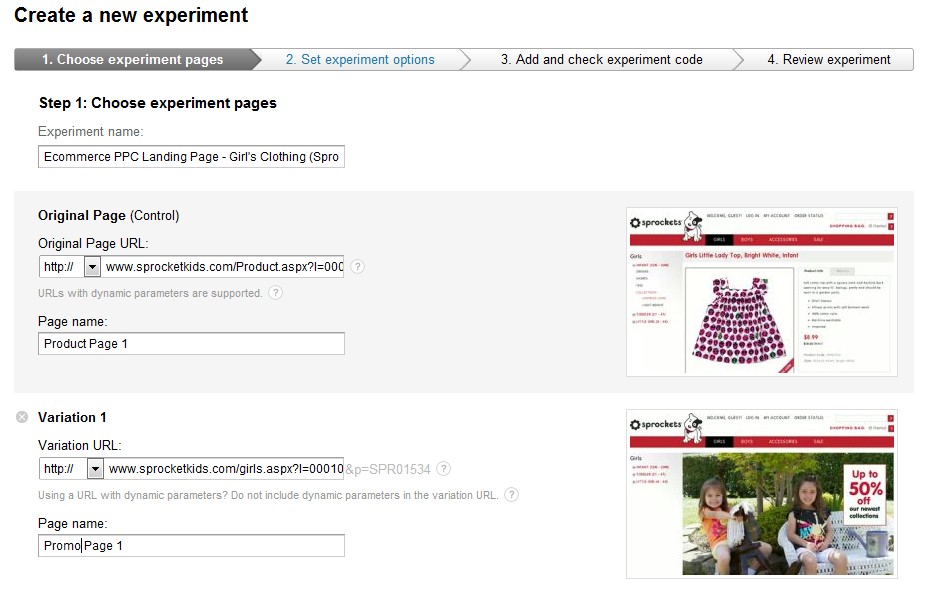
One of the most challenging hurdles for ecommerce marketers is getting visitors to convert after they’ve landed on the site. This practice, commonly known as conversion optimization, is a big deal for ecommerce stores because web traffic is essentially pointless if it’s not producing sales. 
Content Experiments is a new tool in Google Analytics that aids the conversion optimization practice, especially for ecommerce marketers. Formally known as the “Google Website Optimizer,” Content Experiments enables marketers to test different pages to determine which designs, content elements, and layouts are most effective.
Content Experiments can be advantageous for wide variety of campaigns, especially Pay Per Click (PPC) advertising and email marketing. The idea is generate the best possible landing page that meets a specified goal. The insights from Content Experiments can also help optimize conversion for ecommerce SEO and other Internet marketing campaigns.
Below we’ll take you through the simple process of setting-up an experiment.
Creating Content Experiments
To start using Content Experiments, click the “Content” tab on the left side of Google Analytics. Under the “Experiments” option, you’ll be taken through a process of adding test pages and setting-up your conversion goal.
First you’ll need to submit the primary URL of the page to be tested (the “control” sample,) along with up to five page variations (the “variant” sample.) Next you’ll need to create a goal for your experiment. You can set the completion of goals based on URL Destination, Visit Duration, Page/Visit, and Event. Each goal type is effective for various conversion goals, but URL Destination is most common for ecommerce.
You can also set the amount of new visitor traffic that you want taken to your test pages (ranging from 10% up to 100% of new visitors.) Lastly, you’ll need to insert a block of code on each test page of your experiment. Once the code has been validated, you can review your experiment and make any last-minute tweaks before taking it live.
Ideal for Ecommerce Marketers
Google Content Experiments randomly displays variant pages while collecting data on which layouts are providing optimal results. For ecommerce marketers, this is a convenient and systematic way to test different web elements and determine what’s working the best.
Depending on your design capabilities and resources, you can get really creative when using Content Experiments (such as testing the use of video reviews or image galleries on your product pages.) Once you start pinpointing the format and elements that drive the most conversions, you can implement your findings on similar pages to optimize conversions.
Getting traffic to a site is only half the battle of running an ecommerce business. Conversion optimization is paramount to capture more sales and build upon strategies that work. So whether you’re involved in ecommerce SEO, PPC advertising, or both, Google Content Experiments is great tool to help refine your efforts and improve the conversion potential of your website.


